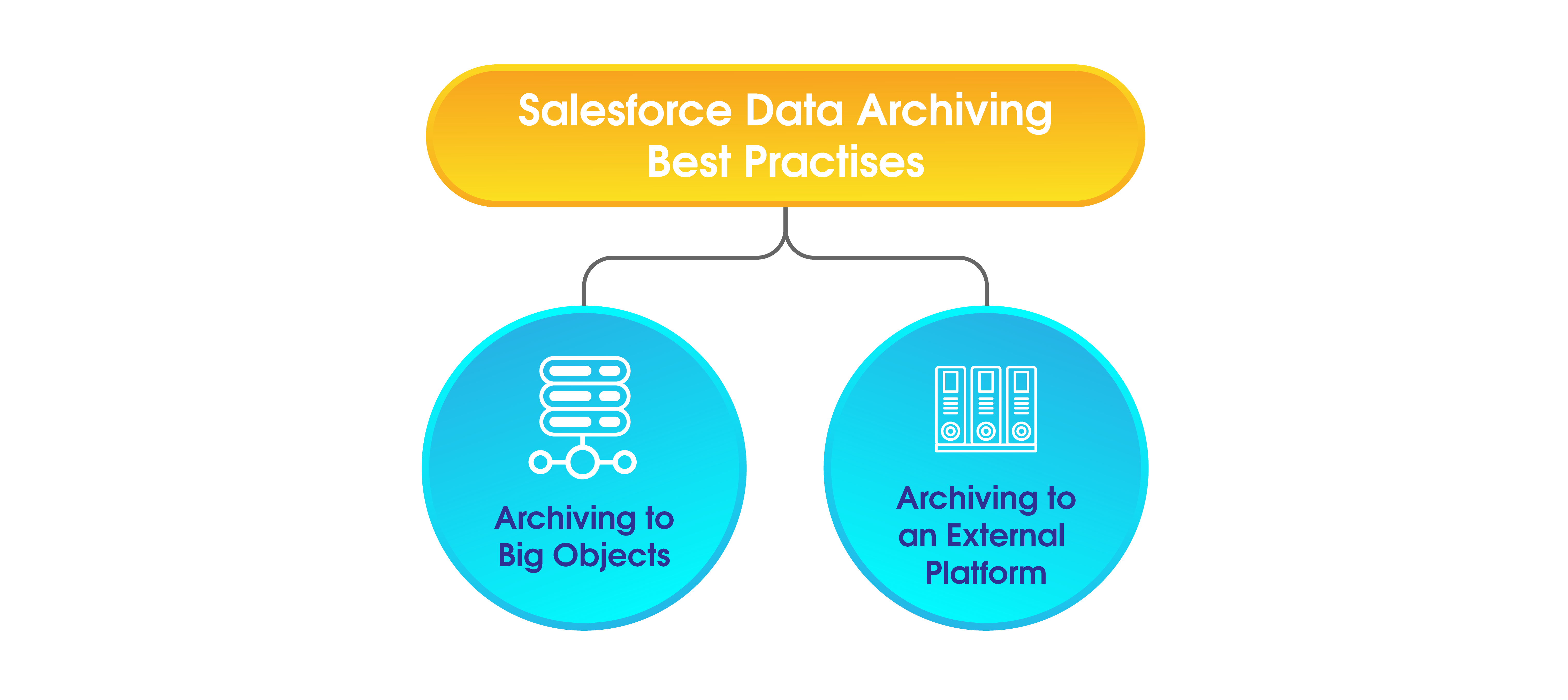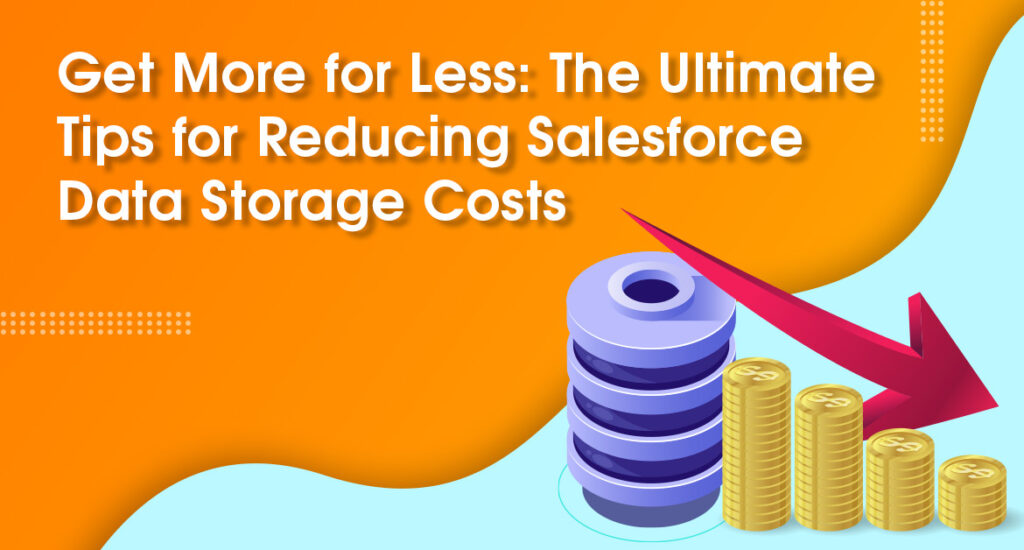If you’ve been using Salesforce for a while, you must have come across/be heading to this red alert STORAGE LIMIT EXCEEDED.
The Salesforce data storage limit is a harsh reality that nobody can help with. And this reality also costs Salesforce users like you an arm and a leg when opting for an additional storage purchase decision. So, what is the solution to overcome the data storage challenges? Have you ever pondered over it?
If you ask us, our answer would be — if you can’t afford the hefty data storage costs, the only solution is to reduce the storage costs.
The next question is HOW?
There are two prominent ways to reduce your Salesforce data storage costs —- Data Clean Up and Data Archiving.

Let’s have a look into each:
#1. Data Clean Up: Removing the Unnecessary Salesforce Data
A Salesforce study reports that 20% of CRM data is inactive. And the dark side of this fact is that having such a huge volume of inactive data can lead you to run out of data storage space. So, you need to eliminate unnecessary data from your production environment.
To identify which data is untouched for a while, you can ask your admins to run a report on data usage using any third-party application. Once you’ve identified the old data, you can either manually or automatically delete those from your Salesforce org. However, this will be a long haul for a large volume of data. So the only option left here is mass deletion.
You can choose the ‘Mass Delete’ option to delete multiple records at once. To access this option, you need to have the ‘Mass Delete’ permission in your user profile. But keep in mind that once a record is deleted, it’s gone permanently and cannot be retrieved. So, exercise caution and verify your data before initiating the deletion process.
Challenges with Mass Deletion of Salesforce Data
- It may break your compliance rules as you no longer retain your records.
- You can delete only a certain number of items that are of the same type at once.
- The Mass Delete option is applicable only for specific Standard Objects.
- The deletion of the records can break the object relationship as it shatters the connection between records.
#2. Data Archiving: Migrating the Unnecessary Salesforce Data
Though the ‘Mass Delete’ option is a big step toward reducing Salesforce data storage costs, it comes with the above (and a lot more) limitations. So, we need to consider the next popular option to reduce data storage costs which is Data Archiving.
Salesforce data archiving is a process where your old data migrates from the production org into an archiving location. You can archive any type of unused data such as closed opportunities, inactive accounts, and closed cases. This will be an advanced strategy to optimize the storage space by retaining the data out of the org and avoiding the expenditure for an additional storage purchase.
There’re two best practices when it comes to Salesforce data archiving —- archiving into Big Objects and archiving into an external platform

Pro Tip for Archivig into Big Objects
To archive data into Salesforce Big Objects, you have only one option available in the market today — DataArchiva Native Archiving. Our one-of-a-kind archiving application migrates your unused data from Salesforce’s data storage space to Big Objects at a 100% native level. It helps you save the data storage cost significantly and deals with your compliance guidelines as your data never moves out of the CRM application.
Our customers unanimously reported that they achieved 85% data storage costs reduction, 5X improvement in the CRM performance, and 5X+ ROI from their archived data with DataArchiva Native Archiving.
Pro Tip for Archiving into an External Platform
Undoubtedly, DataArchiva once again!
DataArchiva’s external archiving app helps you migrate your inactive data from Salesforce’s primary storage location to an external database of your choice such as Oracle, MSSQL, MySQL, Postgres, and Redshift by leveraging your preferred third-party cloud (AWS, Azure, Heroku & GCP) or On-premises platform. That means you let your archived data safely reside in your preferable external environment that your guidelines agree with.
With DataArchiva External Archiving, our customers reduce their data storage costs by 85%-90%, improve their CRM performance by 10X+ times, instantly boost their ROI by 10X+ times, and generate powerful analytics reports (using BI tools).
So why not DataArchiva for Salesforce data storage cost reduction?
Yeah, that’s all about cost-effective data management strategies for Salesforce. If you’ve found DataArchiva as the perfect data management platform that you’ve been looking for in Salesforce, give us a chance to help you. Either schedule a demo with our data experts or connect with us to learn further about our capabilities so that we can take it forward from there.
If You’ve Found This Blog Insightful, Don’t Forget to Share





















